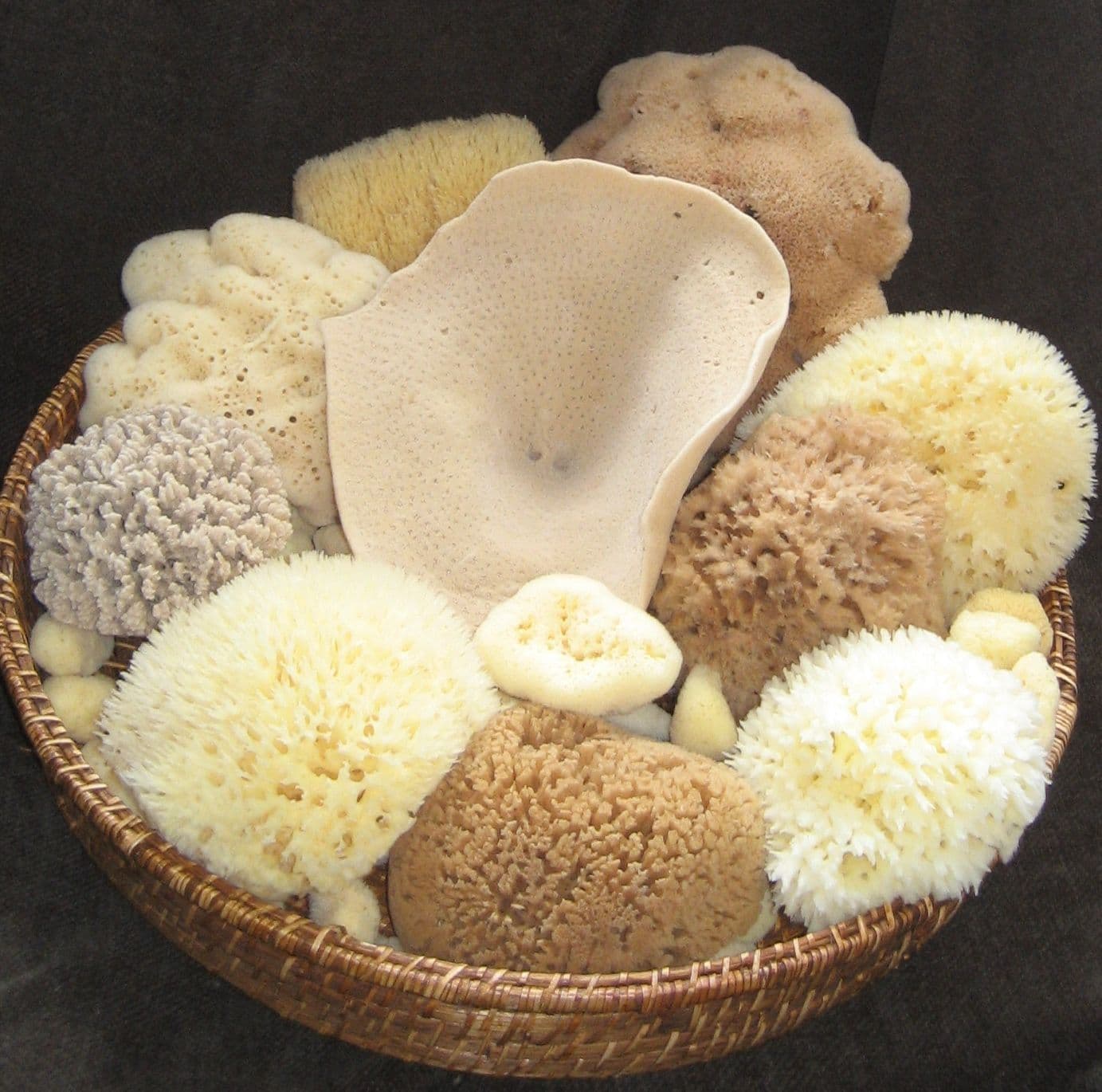The Wonder of Natural Sea Sponges
Question: What is the earliest that Natural Sea Sponges have been used? Answer: Natural sea sponges have been used for more than 2000 years.
Question: How old are Natural Sea Sponges?
Answer: The earliest known multi-celled animal fossils are sponges from China that dates back to about 500 million years ago.
---- A new study led by by geologist Dr Adam Maloof, of Princeton University, discovered tiny ancient fossils of sea sponges measuring up to one centimetre across that lived in ocean reefs off south Australia and were discovered in rocks dated at between 640 and 650million years old. Read article in the Daily Mail
Question: What are the earliest mention and uses of Sea Sponges?
Answer: The Greeks and Romans used sponges for padding their helmets and as a bath accessory. They were also used for general house cleaning. Frescoes of prehistoric cultures in Crete show images of sponges. They are also mentioned in the Bible and medical texts for the fifteenth century describe their use in the cleaning and bathing of wounds. Question: Are Natural Sea Sponges a renewable natural resource?
Answer: Scientists found that regular harvesting actually improves the physical state and population of sponges. During harvesting care is taken not to disrupt the natural balance of the environment.
Question: Do you get natural sponges in fresh water?
Answer: Most sponges live in salt water; only about 150 species live in fresh water.So far scientists have identified about 5,000 different species of sponges - all colours, forms and sizes.
Question: How many Natural Sea Sponge types are there?
Answer: Only about 7 sponge species are commercially viable. These are known as tame sponges. Tame sponges are wide spread in temperate sub- tropical and tropical water around the world.
Question: Are Sponges classed as animals or plants?
Answer: Natural Sponges are classed as animals. Until 1765, sponges were considered as plants, but naturalist John Ellis proved they were actually animals. A sponge does not have a brain or a central nervous system; in fact sponges have no heart, brain, head, mouth or any other body parts and have many plant like qualities. With the exception of the single - celled animals, the Protozoa, sponges are the simplest animals in existence today.
Question: What is the scientific name for natural sea sponges?
Answer: The scientific name for sponges is Porifera. Question: How do natural sea sponges grow in the sea?
Answer: Sea sponges live on the ocean floor. They attach themselves permanently to something solid and move sea water through their bodies.
Question: How do natural sea sponges live and grow under the sea?
Answer: A sponge has thousands of pores which let the water flow through it continually. They filter tiny organisms and plankton for food and nutrients from the water. The flowing water also carries out waste products. It is these deep pores that enable a sponge to hold such a tremendous amount of water. Question: How do natural sea sponges reproduce?
Answer: During reproduction each adult can act as either the female or the male. In most species fertilisation is internal. When sperm is released and floating in the water it is caught by another sponge's collar cells. Fertilisation of eggs takes place inside the sponge. A tiny larva develops and is released. The larva uses tiny hairs to propel itself through the water and eventually attach itself to a solid object to grow into an adult sponge. Sponges are only able to produce eggs after three years. Question: Can a cut up sponge grow again?
Answer: Some sponges are able to regenerate themselves, from even the smallest root left after harvesting. If a sponge is broken up into tiny pieces the pieces will grow into clones of the parent sponge with exactly the same DNA as its parent's DNA. If you were to put a "live" sponge in a blender and blend it up and put the blended up sponge back in the sea, they would come together to form a new sponge. Characteristics of Natural Sea Sponges Super soft texture | Super absorbent | Create a luxurious lather | Stimulate your circulatory system | Revitalise your skin | Superbly cleanse your skin | Durable | Long lasting | Firm | Organic | 100% biodegradable | Hypo-allergenic | Tear resistant | Do not retain odours | |
Question: Do natural sea sponges become yucky like artificial sponges?
Answer: Natural sponges also inherently have anti-microbial and anti-bacterial properties. Because water is easily flushed through it, it is easy to keep your sponge clean and free from harmful contaminants. Question: Why are some sea sponges yellow and some brown?
Answer: The majority of sponges are cleaned, processed and bleached to an attractive golden yellow colour but some are unbleached and they have a natural brown colour. Question: How are natural sponges processed?
Answer: All commercial sponges go through a rigorous cleaning process to remove bits of shell, bamboo and sand and
sponge suppliers take great care to remove all foreign matter from the harvested sponges.
Question: Are natural sea sponges chemical free?
Answer: All sponges have to pass through a chemical treatment even if they are not going to be bleached. For instance, Hydrochloric acid is used to eliminate stones, see weed, shells and plant remains because it would not be possible to clean the sponges thoroughly for commercial use without this step. Question: Are harmful chemicals used to clean and bleach natural sponges?
Answer: All chemicals used are safe and environmentally friendly and recyclable. | 
